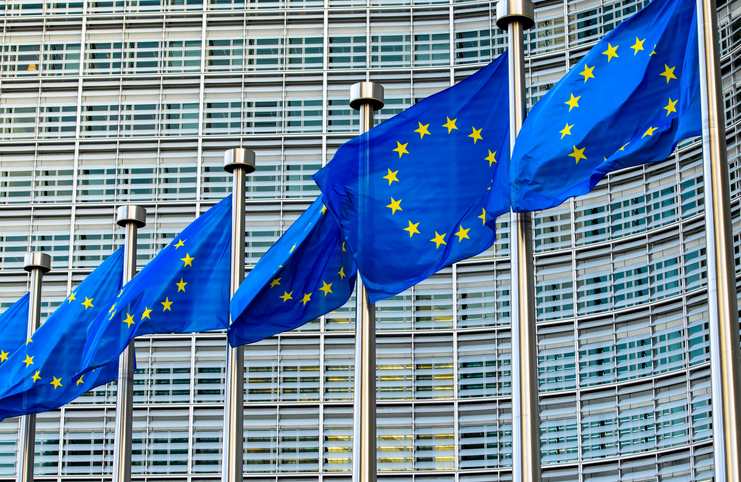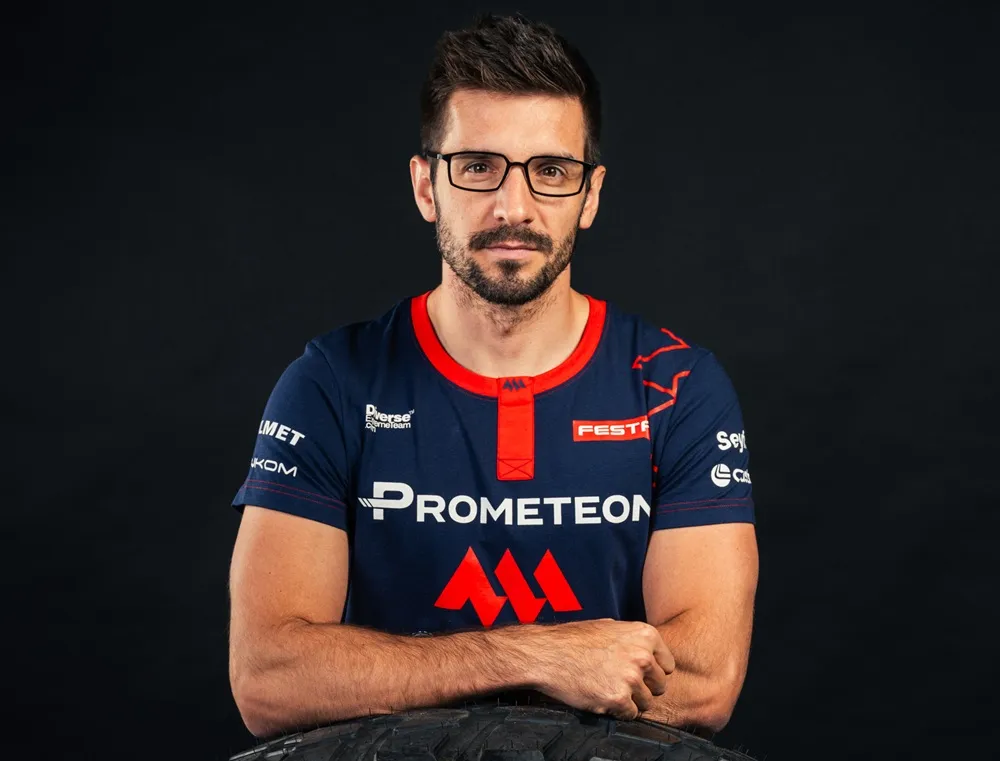BKT is a fast-growing manufacturer of OTR, Agricultural and Industrial tyres that has been making inroads into premium market share. The Indian company recognised its own success and has realigned its marketing to challenge the market leaders. As specialists in the sector, Commercial Tyre Business asked BKT’s Piero Torassa for his thoughts on Industrial tyres
BKT – is serious about growing its industrial tyre offer
As a specialist, we asked Torassa how important the Industrial tyre sector was to the company’s offer?

Torassa, replied; “The industrial tyre sector plays a strategic role for BKT, since it is a key part of the broader Off-Highway specialty tire market, where the company is a major global player and which represents BKT’s core business.”
In the industrial sector, BKT offers a highly diversified product range with advanced solutions tailored to the specific requirements of multiple applications. The top-of-the range products that have been developed for this sector include:
- MAGLIFT, designed for industrial handling and logistics operations with forklifts, stands out for its high load capacity, stability;
- AIROMAX AM 27, intended for mobile cranes in the construction sector. This tyre distinguishes itself for its heat resistance and exceptional comfort, as well as being a reliable solution in operations that require excellent handling.
- CONSTAR, particularly suitable for compact loaders and telehandlers in lifting and loading applications
- LIFTMAX LM 81, designed for heavy forklifts has a robust All Steel casing and a reinforced sidewall to provide stability and best handling during lifting operations.
 Torassa adds; “These tyres are the result of BKT’s ongoing commitment to research and development of innovative technical solutions, whose main objective is to provide a prompt and effective response to the industry’s safety, stability, and performance requirements.”
Torassa adds; “These tyres are the result of BKT’s ongoing commitment to research and development of innovative technical solutions, whose main objective is to provide a prompt and effective response to the industry’s safety, stability, and performance requirements.”
Industrial tyres cover wide field of uses from fork lift truck, through telehandlers to cranes. Does the market dictate the specification of the tyre, what are the key attributes needed for Industrial tyres
“In the industrial field, selecting the most suitable tyre depends on numerous factors—all of them crucial for proper equipment performance, operational efficiency, and operator safety,” says Torassa. “Each application calls for the use of specific tyres according to technical requirements and the particular use case.
“The first distinctive aspect is the tyre construction. So-called solid tyres have an air-free, solid-rubber structure, making them ideal for operations in demanding environments or those characterized by abundant debris. As a result, they are particularly resistant to impacts, punctures, and wear, even under extreme operating conditions.”
BKT offers both standard and non-marking versions, i.e. tyres made from light-coloured compounds (often white or gray) that have been specifically engineered not to leave marks on the floor.
Cross-ply or bias tyres provide stiffness and stability in lifting. Radial tyres, instead, are notable for fuel-efficiency gains, longer service life, and a smoother ride—particularly beneficial when operating at higher speeds.
Torassa adds; “Overall, tyre selection hinges on several factors: the specific application for which the product was developed; the operating environment, such as ground conditions, potential exposure to chemicals, and temperature; required load capacity; tyre size; and the type of vehicle or machinery.”
In solid tyres, what are to benefits of the different types of construction? Would you advise layered rubber construction, of solid tires filled with bonded textile? What are the benefits and drawbacks of the various styles?
“Solid tyres are an ideal solution for complex industrial applications or wherever there is a high risk of damage due to, for example, debris, sharp objects, or abrasive materials,” says Torassa. “Unlike pneumatic tyres, solid tyres deliver greater strength and a longer service life, while requiring less maintenance and ensuring a high level of reliability.
“In terms of construction, typically it consists of multiple rubber layers of differing hardness: an outer layer that is highly resistant to wear, a shock-absorbing middle layer, and a base designed for stability and support. For example, the premium version of MAGLIFT is built with three layers, as the standard and ECO versions have two.”
Telehandlers and cranes can involve moving loads at height with considerable leverage on the tyres. How do telehandler and crane tyres differ from fork list tyres?
 “Telehandling and crane operations do ask for different types of tyres,” agrees Torassa. “Generally speaking, we can say that when it comes to tyres designed for these kinds of applications it is important to ensure high stability—especially during operations at height—and excellent load capacity: these are vital and key to ensuring safety, efficiency, and operational continuity.
“Telehandling and crane operations do ask for different types of tyres,” agrees Torassa. “Generally speaking, we can say that when it comes to tyres designed for these kinds of applications it is important to ensure high stability—especially during operations at height—and excellent load capacity: these are vital and key to ensuring safety, efficiency, and operational continuity.
“BKT tyres designed for these machines are distinguished by a robust structure engineered to withstand considerable mechanical stress and to ensure precision handling even under challenging conditions, in addition to top traction, and vertical and lateral stability.”
When choosing the right tyre, key selection factors include:
- Application type (construction, logistics, port operations, etc.)
- Machinery-specific size requirements
- Ground surface type (asphalt, hard-packed earth, mixed terrains)
- Required load capacity
BKT’s product range meets all these needs by providing tires tailored to different application requirements.
Today, we cannot talk about tyres without also asking about the impact of digital technology with RFID and TPMS being used to manage tyres across fleets. Is this the case with industrial tyres?
Torassa explains; “In the industrial sector, tyre management is becoming increasingly strategic, particularly in settings where operational efficiency, safety, and fleet uptime are top priorities. BKT generally recommends the use of TPMS as well for industrial tyres: These systems enable real-time monitoring of tyre pressure, promptly alerting operators of abnormal pressure drops that might affect tyre integrity, equipment stability, increase energy consumption, or accelerate tread wear.”
Sustainability is a key word. With industrial tyres utilising a higher level of rubber content, how can they be made more sustainable? Can they include higher levels of recycled rubber/ rCB etc? Can they be retreaded?
“At BKT, we are fully aware that excellence in the Off-Highway tyre sector is not only measured by performance but also by the environmental impact throughout the entire product life-cycle,” says Torassa. “This principle applies to the entire BKT tyre range, including industrial tyres, which inherently require more rubber and structural materials compared to tyres of other segments.
“Our approach to sustainability is holistic, spanning the entire supply chain: from improving the energy efficiency of our production plants, reducing greenhouse gas emissions, and responsibly managing water resources, to implementing a rigorous environmental management system in line with international standards.
“Furthermore, BKT is an active member of the Global Platform for Sustainable Natural Rubber (GPSNR), reaffirming our commitment to a transparent, fair, and sustainable rubber supply chain that values not only production efficiency but also social and environmental responsibility.”
Sustainability is an increasing element of tyre production and use. With Industrial tyres using greater volumes of natural rubber then some other sectors, end of life tyre management is critical to ongoing sustainability. How can your Industrial tyres best be recycled?
“The recycling process is not directly managed by us,” points out Torassa. “However, as a world-leading manufacturer, we fully recognise our responsibility in the global sustainability scenario and are committed to fulfilling it. We do our utmost to encourage stakeholders—from distribution partners to dealers—to promote a circular economy, an extended product life and sustainable end-of-life solutions, in line with our overall goal of further enhancing resource efficiency and reducing our environmental footprint.”








